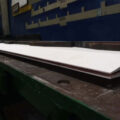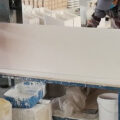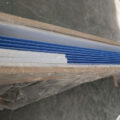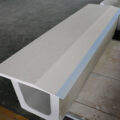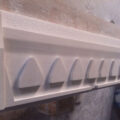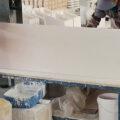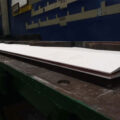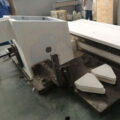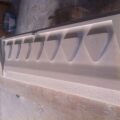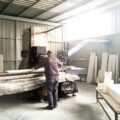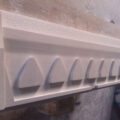The continuous caster nozzle is formed by compressing the felt of refractory fiber and coagulating the binder containing colloidal silica to form a rigid member. Continuous caster nozzle is also called Ceramic Fiber Castertip, Castertip, Tip Cavity, Nozzle Cavity, Casting Spile, Aluminum Silicate Ceramic Caster Tip, Casting Tips And Nozzle.
After pressing the refractory blanket into the desired geometry, the closed mold is heated to evaporate water from the solution remaining in the blanket. For example, it is suitable to heat the blanket at about 250°C to 325°C for about two hours or at about 150°C for about ten hours in a closed mold. This produces a strong and rigid member of refractory fibers bonded together by a binder containing silica. Before being laminated to the refractory felt, the glass fabric was wetted with a solution containing stabilized colloidal silica. The outer surface has a metal foil which is bonded to it by an adhesive containing colloidal silica.

The glass fabric on the inner surface of the continuous feed caster tip minimizes the erosion of the refractory felt by molten aluminum and the like, thereby minimizing the shedding of particles in the sheet cast by the continuous casting machine. The metal foil on the outside of the continuous caster nozzle provides a moisture barrier, which substantially prevents moisture from contacting the refractory felt during the use of the feed tip.
The compression of the refractory felt to form the feed tip seems to cause the surface of the feed tip to be denser than the felt in its inner region. Coupled with the reinforcing effect of glass fiber, the strength of the feed head can be enhanced and breakage can be minimized. With this arrangement, compared to the one-time use of the prior art tip composed of the asbestos clay composition, four or more uses of the feed tip can be expected from this configuration.
The degree of compression of the refractory felt is greater near the downstream edge than in the upstream part of the feed end. Since the downstream edge is much more compressed than the upstream part, its density is significantly greater.
Compared with the upstream part, the greater compression of the felt in the downstream edge region has a significant impact on the physical properties of the feed tip. The thermal conductivity of the upstream part is significantly lower than the thermal conductivity of the downstream tip to ensure that premature solidification of the molten metal does not occur.
The elastic modulus and strength of the downstream edge of the feed tip are greatly enhanced due to its greater density. This area is the most easily broken part of the feed tip, and the enhanced performance is very important in extending the life of the continuous caster nozzle. The greater strength of the downstream edge part also resists the erosion of its highest velocity molten metal.

